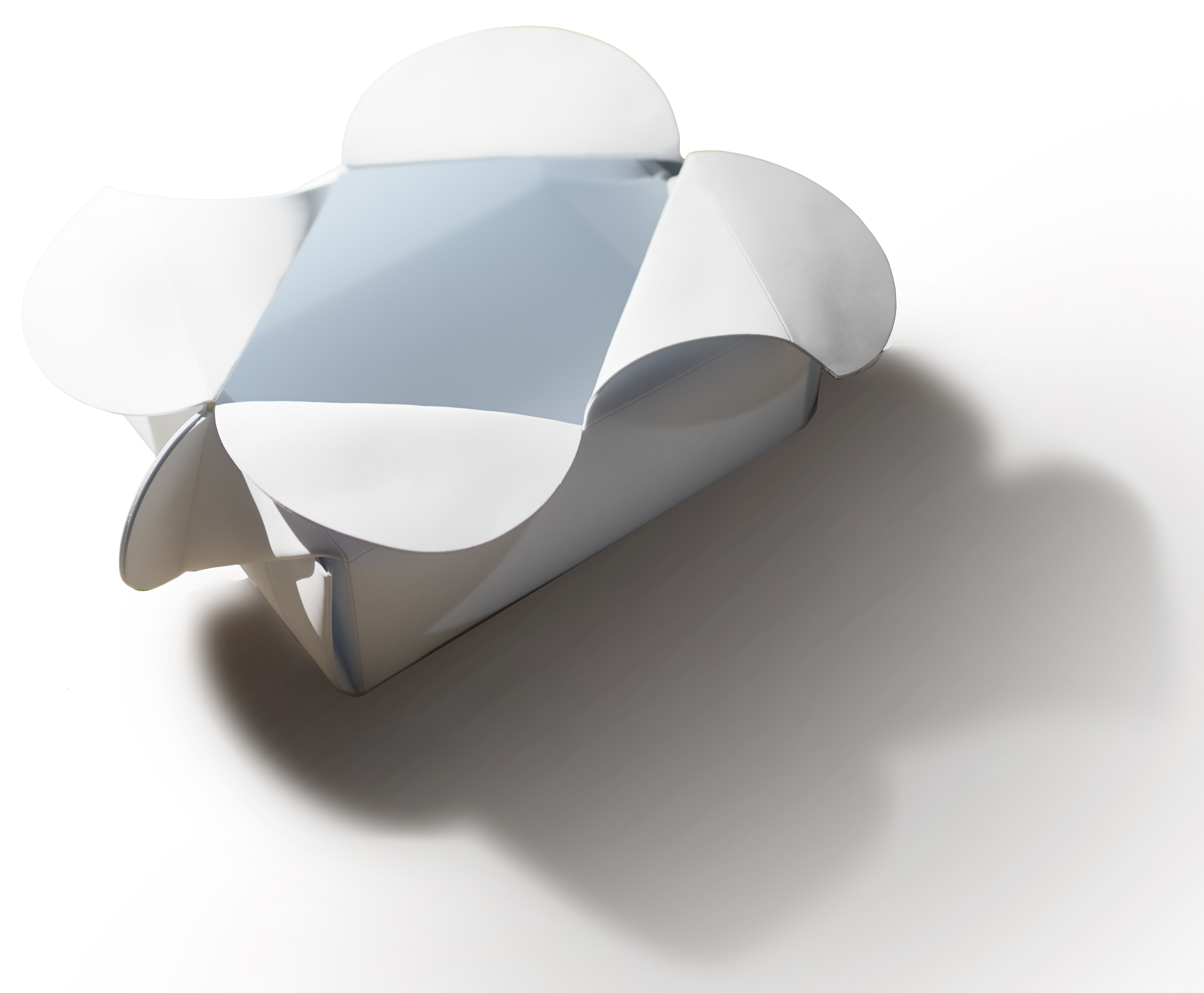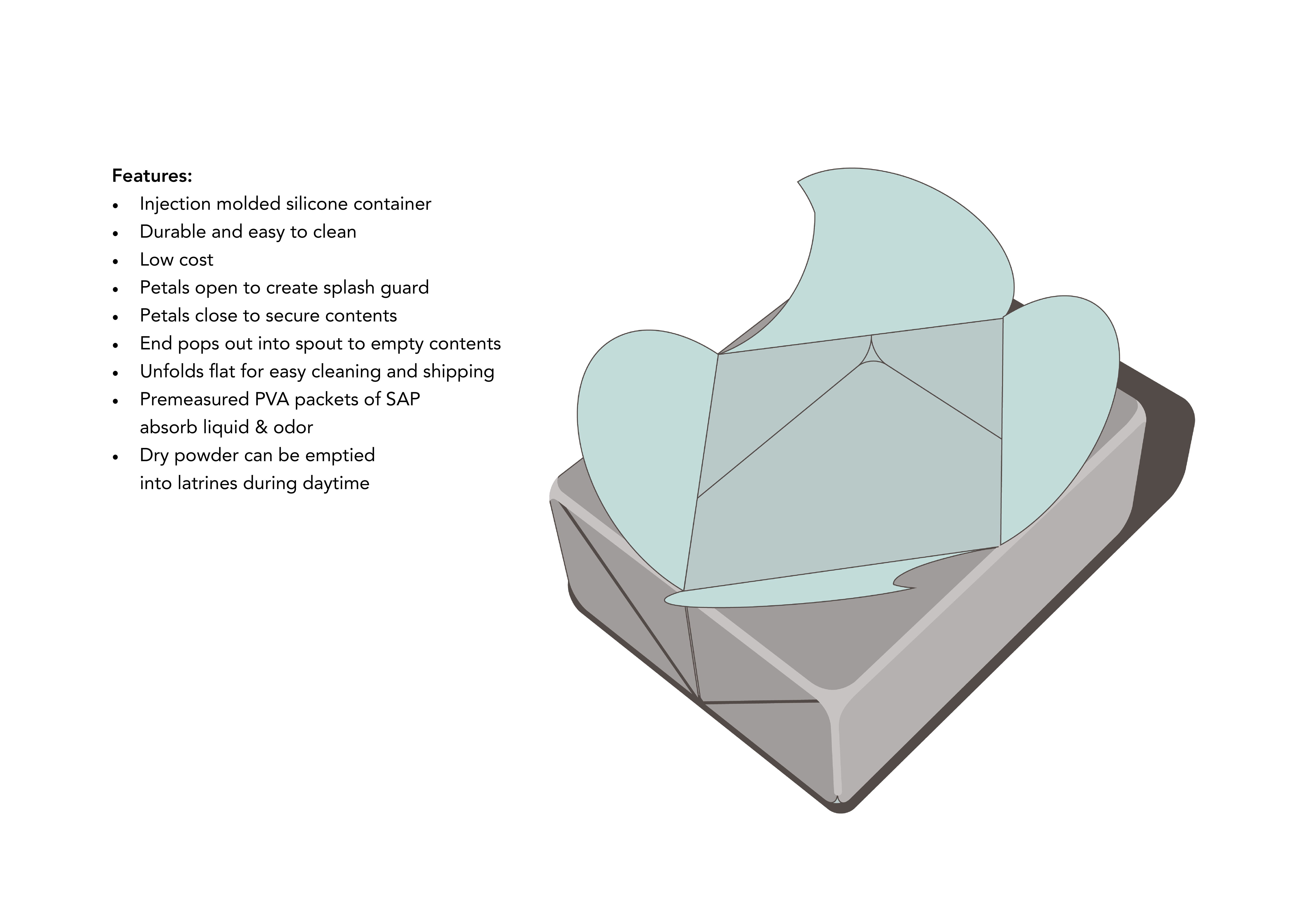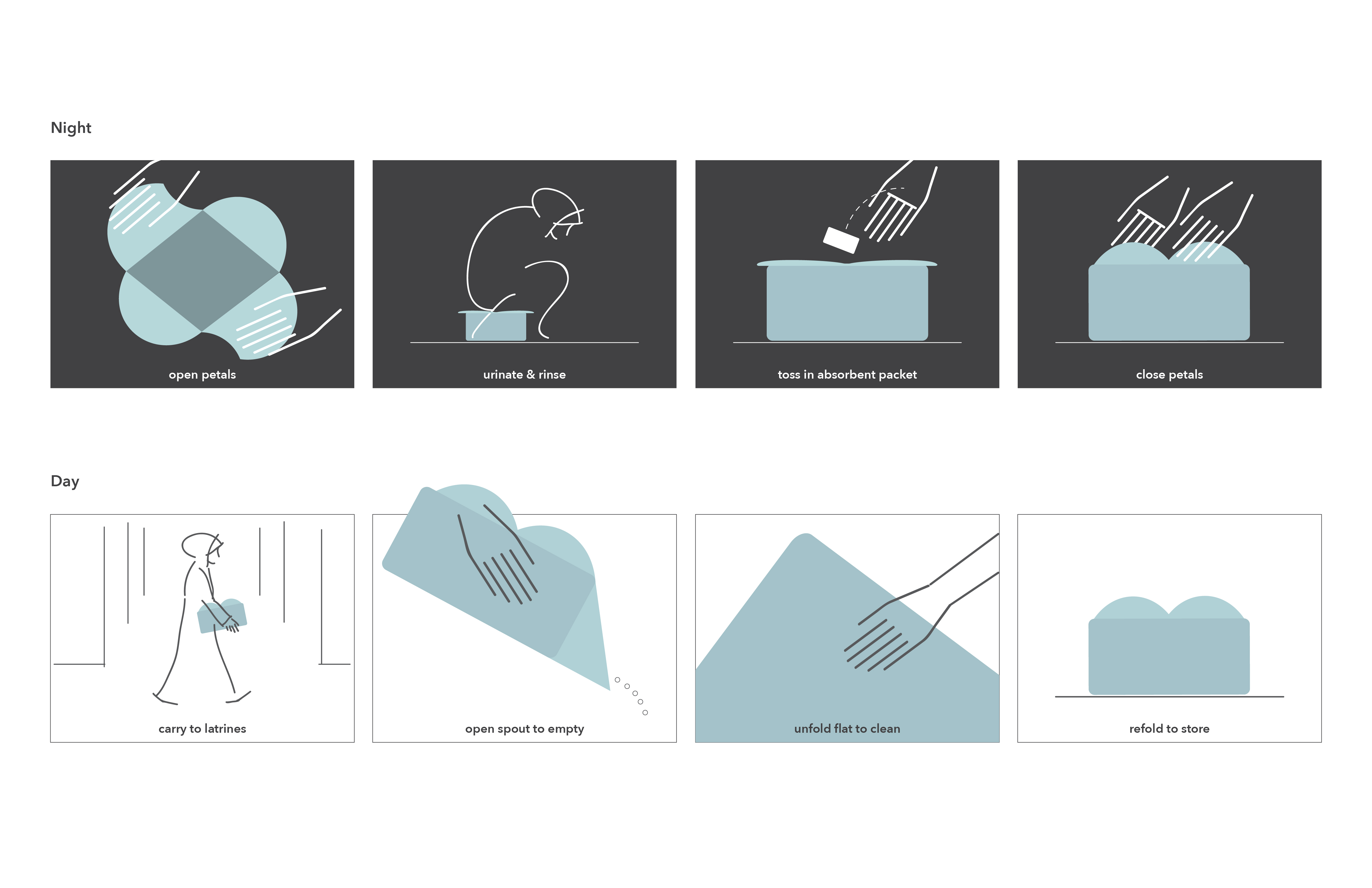September 05, 2018
Student Design Honored by National James Dyson Award Competition
Introducing Night Loo, a portable, personal urinal for refugee women and girls
Over 2.6 million refugees live in refugee camps that often lack adequate access to basic amenities such as food, water, and first aid. Women and girls living in refugee camps face another problem – the threat of sexual violence is all too prevalent for them, with communal toilets serving as hotbeds for sexual assault. This threat of assault only increases at night. To prevent having to relieve themselves at night, refugee women and girls sometimes abstain from eating or drinking, resulting in a negative impact on their health and livelihood.
The national runner-up in this year’s James Dyson Award sets out to solve this problem and to empower women and girls living in refugee camps.
Designed by ArtCenter College of Design student Anna Meddaugh, Night Loo is a portable, personal urinal that allows women and girls living in refugee camps to safely go to the bathroom at night. The petal-like flaps act as a splash guard when open, and cover the contents of the urinal when closed. After relieving herself, the user drops in a packet of pre-portioned super-absorbent polymer encased in dissolving PVA film, which turns liquid waste into an odorless powder in under a minute. The powder is then emptied through a spout that pops out of one end of the device. The urinal can also be unfolded to be flat, making it easy to clean. With Night Loo, refugee women and girls can feel safe going to the bathroom.
Night Loo advances to the next stage of the James Dyson Award and is in the running for the international prize of $40,000, chosen by James Dyson. The James Dyson Award is an international design competition for students of engineering or design. The competition brief is simple: design something that solves a problem, and Night Loo does just that.
Designer Anna Meddaugh says: “Humanitarian issues have always interested me – during my undergraduate studies I learned a lot about human trafficking worldwide, and it really captivated and concerned me for some time after. Humanitarian problems are part of the reason I decided to go into product design. I thought maybe I can help address these issues. There’s got to be a design solution in there somewhere! I had actually planned on taking different classes the semester I designed Night Loo, but I saw the studio prompt (design something for displaced people) and switched my whole schedule because I very much wanted to design for people in need. It’s been my favorite project at ArtCenter – it’s been the most meaningful.”
Judge Daniel K. Sodickson, MD, PhD, Director of the Center for Biomedical Imaging, Principal Investigator at the Center for Advanced Imaging Innovation and Research, and Vice-Chair for Research, Department of Radiology at New York University School of Medicine, says: “A whole-systems solution for a dramatically human challenge – and a very topical challenge right now. It felt as if the designer was sitting inside the heads of the people for whom she was designing, and that speaks – in some ways – to the human element of design. It’s not just the technology; it’s really understanding for whom you are designing the technology.”
###
NOTES TO EDITORS:
The National Winner
The national winner in the US competition of the James Dyson Award receives $2,500 and advances to the international round of the competition, which features 20 projects.
Lighthouse – Designed by Massachusetts Institute of Technology student Dr. You Wu
Lighthouse is a low-cost robot that travels through water pipes to proactively find leaks before they become a problem. The robot is built from soft, flexible material and uses a special tactile sensor to detect leaks in underground water pipes. As the robot passively flows through a pipe and navigates around pipe elbows, the sensor is tugged by the suction force of a water leak. When a leak is detected, Lighthouse measures the strength of the tug and records the location of the leak.
Existing methods of leak detection, such as geophones and acoustic correlators, are inherently flawed, as they search for the sound of leaks. These acoustic devices often find leaks that are already losing at least ten gallons of water per minute, which is twice the flow rate of a typical shower. In other words, these devices catch leaks too late. With its unique tactile sensor, Lighthouse can find leaks when they are losing only one gallon of water per minute, identifying leaks before they become catastrophic.
The Runners-up
The two runners-up in the US competition of the James Dyson Award progress to the international round of the competition, which features 20 projects.
Night Loo – Designed by ArtCenter College of Design student Anna Meddaugh
Night Loo is a portable, personal urinal that allows women and girls living in refugee camps to safely go to the bathroom at night. The petal-like flaps act as a splash guard when open, and cover the contents of the urinal when closed. After relieving herself, the user drops in a packet of pre-portioned super-absorbent polymer encased in dissolving PVA film, which turns liquid waste into an odorless powder in under a minute. The powder is then emptied through a spot that pops out of one end of the device. The urinal can also be unfolded to be flat, making it easy to clean.
Infinite Cooling – Designed by Massachusetts Institute of Technology student Maher Damak
Infinite Cooling is a technology that reduces operational costs for power plants and alleviates water stress for nearby communities by recovering large quantities of clean water from cooling tower plumes. Vaporized water droplets from the power plant are zapped with a beam of ions and are collected on wire mesh. The droplets then fall into a temporary reservoir and can either be reused in the power plant or sent to a city’s water supply system. Infinite Cooling can be retrofitted onto any type of cooling tower or integrated into new cooling towers.
The Judges
- Isis Shiffer – Founder of Spitfire Industries and 2016 international winner of the James Dyson Award
Isis Shiffer is a Brooklyn based industrial designer. She runs Spitfire Industry, a small studio that focuses on practical solutions to real problems. Isis' designs have won national and international awards and have been displayed in four continents. She holds a Master's of Industrial Design from Pratt Institute and a BFA from Pennsylvania Academy of the Fine Arts and the University of Pennsylvania. Outside the studio, Isis enjoys cycling, fine art, mountains, and underground music.
- Daniel K. Sodickson, MD, PhD – Director of the Center for Biomedical Imaging, Principal Investigator at the Center for Advanced Imaging Innovation and Research, and Vice-Chair for Research, Department of Radiology at New York University School of Medicine
Dr. Sodickson received a BS in Physics and a BA in Humanities from Yale College. He earned his PhD in Medical Physics from MIT and his MD from Harvard Medical School, both as a part of the Harvard-MIT Division of Health Sciences and Technology. Dr. Sodickson’s research is primarily focused on the development of new techniques for biomedical imaging, with the broad aim of seeing what has previously been invisible in order to improve human health.
- Lance Ulanoff – Tech journalist, on-air expert, and commentator
A 30-plus year industry veteran and award-winning journalist, Lance Ulanoff has covered technology since PCs were the size of suitcases, “on line” meant “waiting” and CPU speeds were measured in single-digit megahertz. He most recently served as Chief Correspondent for Mashable where he covered all facets of technology and the intersection of digital and life. Prior to joining Mashable in September 2011, Lance served as Editor in Chief of PCMag.com and Senior Vice President of Content for the Ziff Davis, Inc. While there, he guided the brand to a 100% digital existence and oversaw content strategy for all of Ziff Davis’ Web sites. In his spare time, Lance draws cartoons, which he occasionally posts online. He and his wife Linda have been married for over 25 years and have raised two amazing children.
The James Dyson Award
The James Dyson Award is run by the James Dyson Foundation , a registered charity supporting design, technology and engineering education, medical research charities, and local community projects. The James Dyson Foundation works with schools and universities across the US and the globe.
The award currently runs in 27 countries. The brief is simple: design something that solves a problem. The contest is open to university level students (and recent graduates) studying product design, industrial design, and engineering. The international prize is $40,000 for the student and $6,000 for their university department. International runners-up will receive $6,000 each.
For more information and regular updates on the progress of the James Dyson Award, follow it onFacebook, Instagram, and Twitter.
Upcoming announcements
- Dyson engineers’ shortlist: September 21st, 2018
- International winner announcement: October 18th, 2018
For more information, please contact the Dyson US press office at uspr@dyson.com.





